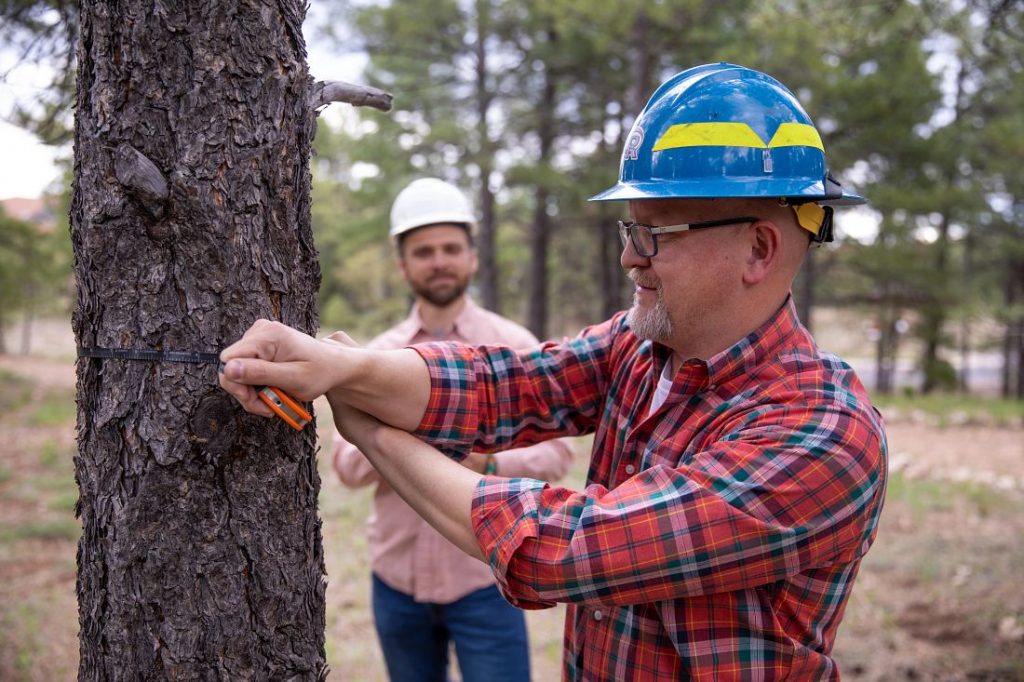Research institutes in Arizona, Colorado and New Mexico signed a $16.47-million agreement with the U.S. Forest Service to map forest treatments and measure their effectiveness in reducing the risk of catastrophic wildfires.
The money is directed from the Infrastructure Investment and Jobs Act passed by Congress in November 2021 and is a part of the $5.4 billion allocated in the bill for wildfire mitigation and forest restoration.
The funds go to the Southwest Ecological Restoration Institutes, or SWERI, which were congressionally authorized in 2004 to ensure that best available science is used in the development, implementation and monitoring of forest restoration treatments. The institutes are made up of the Ecological Restoration Institute at Northern Arizona University, the Colorado Forest Restoration Institute at Colorado State University and the New Mexico Forest and Watershed Restoration Institute at Highlands University.
“SWERI and the ERI are well suited for this endeavor,” said Andrew Sánchez Meador, executive director of the ERI. “Not only does the third-party nature of our institutions provide an increased level of credibility, but we also have a long history assisting and providing science to support cross-boundary planning, implementation and adaptive management related to wildfire.”
A challenge facing many policymakers, land management agencies and the research community has been a lack of access to past, current and future fuel treatment data, along with a need to understand the effectiveness of fuel treatments before, during and after wildfires occur. For this national project, the SWERI will work in partnership with coordinators in the Forest Service Washington Office and the Department of Interior Office of Wildland Fire to facilitate the access, use and application of cross-boundary fuel treatment data.
“We’ve developed a four-phased approach, including scoping; action plan development; implementation of that plan; and continued operation and maintenance,” Sánchez Meador said, “and we’re well positioned to compile and display existing information, as well as coordinate and facilitate the use of these data.”
As wildfires grow in size, frequency and severity, so grows the recognition that fires do not care about land ownership, jurisdictions or management agencies. The creation of a national treatment database will aid in cross-boundary planning, fire modeling and wildfire risk prediction, and will facilitate treatments on the ground.
Additionally, this research will require SWERI to expand their staff, creating jobs in Arizona, Colorado and New Mexico, and potentially across the Intermountain West. Recently, the ERI hired program director Aaron Kimple to lead these efforts and accomplish this multi-year project. The Ecological Restoration Institute at NAU holds the main agreement with the Forest Service and manages the subaward agreements with the Colorado and New Mexico institutes and other contractors.
“As more communities and ecosystems are impacted by wildfire, and prolonged drought, we need to make sure we’re learning as much as we can about the outcomes of management and its effect on the sustainability of our natural resources,” Sánchez Meador said. “On top of this, we want to make sure our forests are managed in a way that ensures we’ll always have forests, and we’re not losing vital ecosystems and the services they provide that are vital to our communities, economies, cultures and well-being.”



